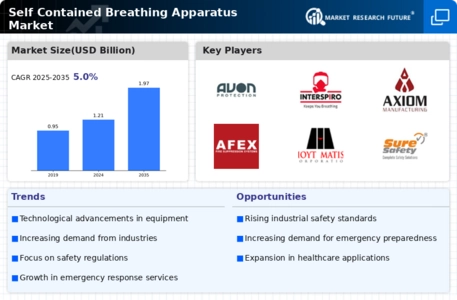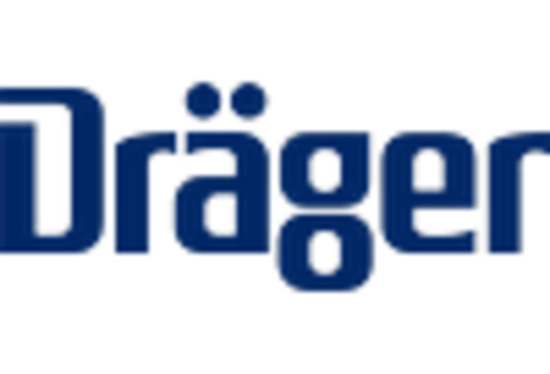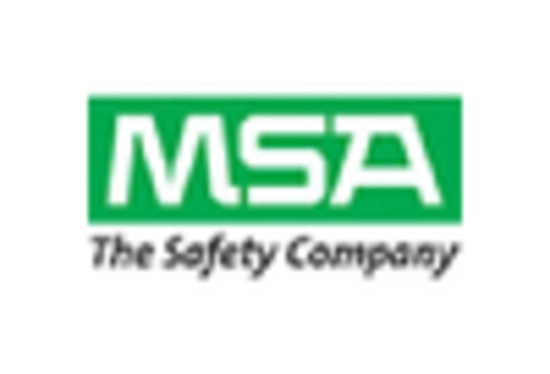Market Share
Self Contained Breathing Apparatus Market Share Analysis
The Communication Train Control (CBTC) market has transformed greatly due to advances in railway technology and an increased need for safe and efficient transport systems. An upward trend toward global uptake of CBTC systems is one significant pattern witnessed in this industry. Integration of automation and artificial intelligence (AI) technologies remains an important part of the CBTC market. Rail operators are now using AI algorithms in their automated train control systems, which improve decision-making processes and enhance overall system performance. On the other hand, interoperability has become a major aspect of the CBTC market due to seamless communication across different rail systems. Standardizing efforts, in addition to open protocol creation, enable various manufacturers' CBTC solutions to be integrated within one railroad, hence making it possible for them to talk together on different lines or networks. Moreover, this market has also seen a rise in emphasis on cyber security within CBTC systems. The need to secure critical infrastructure from cyber-attacks has become increasingly important as rail networks get more connected and reliant on digital communications. Another notability is sustainability in the CBTC market, which aligns with global efforts to reduce the environmental impact of transportation. CBTC systems optimize train movements, minimize idle times, and reduce energy use, hence contributing to energy efficiency. Urban planners and transportation authorities are making sustainability their main point while at the same time choosing to go for the CBTC system as it is aligned with the overall aim of having environmentally friendly and resource-efficient rail networks. Also, the Cloud-Based Train System (CBTS) market is moving towards cloud-based solutions and data analytics. For example, centralized data storage in cloud computing allows for real-time analysis of operational information that can help railway operators like Sri Lanka Railways make data-driven decisions, leading to increased efficiency and performance. To conclude, communication-based train control market trends are shaped by technological advancement, interoperability, cyber security, sustainability, and integration of cloud-based solutions into present-day systems. Through adoption all over the world, there is growing recognition that they can help modern railways cope with congestion problems and safety issues as well as provide effective means of transport. Stakeholders should expect additional innovations in the future because this will ensure that CBTC remains an important aspect of modern railway signaling/control boards.









Leave a Comment